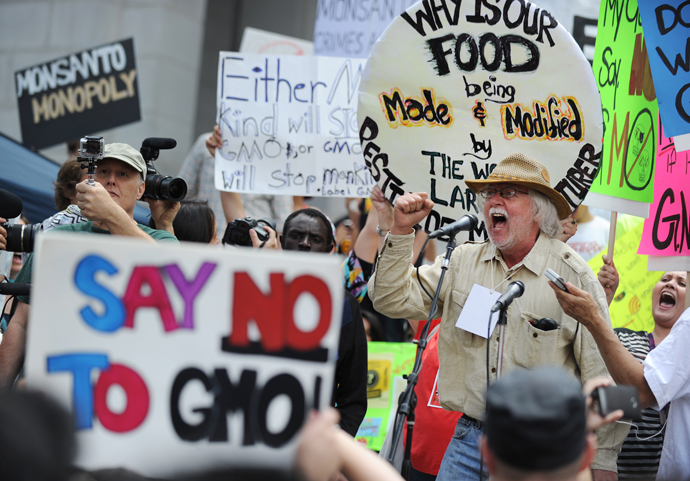Monsanto claims it has no idea how its herbicide-resistant strain of wheat made its way onto an Oregon field. The global biotech giant based in Missouri says it abandoned research on it in 2004 and is mystified by its emergence nearly a decade later.
Monsanto tested the GMO varieties in 17 US states between 1998 and 2004. Although it also tested the GM wheat in Oregon, the company claims it destroyed all of the material upon the conclusion of the program and that it never grew the wheat strain on the farm where it was found last month.
“The company’s internal assessments suggest that neither seed left in the soil nor wheat pollen flow serve as reasonable explanations behind this reported detection,” the biotech giant said in a news releaseFriday.
The company claims that even if the wheat seed had been left in the ground, it would not have survived longer than one or two years in the soil. Monsanto also states that its seed varieties could not have possibly traveled across the state, since 99 percent of wheat pollen is deposited within 10 meters of the plant.
“This report is unusual since our program was discontinued nine years ago, and this is the only report after more than 500 million acres (200 million hectare) of wheat have been grown,” the company said in its statement.

Demonstrators hold up posters during a protest against U.S.-based Monsanto Co. and genetically modified organisms (GMO), in New York May 25, 2013 (Reuters / Eduardo Munoz)
Since May 29, the US Department of Agriculture’s Animal and Plant Health Inspection Service has conducted a multi-state investigation to determine how the GM wheat reached the Oregon farm.
A local farmer discovered it after dousing his field with Monsanto’s “Roundup Ready” pesticide and realizing that some of the wheat plants were resistant to it. He alerted the USDA, which soon determined that the herbicide-resistant wheat crop was the same variety Monsanto tested nearly a decade ago.
The USDA never approved the strain, and environmentalists have expressed deep concern about potential health risks involving the mysterious GM crop. The finding has already had a detrimental impact on US trade: Japanese authorities last week announced that they would suspend imports of US wheat.
Shortly after the announcement, wheat for July delivery fell by 8.25 cents to $6.945 per bushel on the Chicago Board Trade.

David King, founder and chairman of the Seed Library of Los Angeles, speaks to activists during a protest against agribusiness giant Monsanto in Los Angeles on May 25, 2013 (AFP Photo / Robyn Beck)
And Monsanto’s asserted bewilderment serves as no comfort to those concerned about the presence of unapproved GM crops in the US, particularly foreign importers who fear that the GM variety may have been present in their crop purchases.
A USDA spokeswoman told Reuters on Monday that there are “no indications that there is any GE wheat in commerce.” But if investigators find any more of the unapproved wheat variety growing on US farms, the agriculture industry could take an even harder hit.
Genetically modified wheat has not been approved for commercial growing, and Asian and European buyers have expressed little interest in it, which in large part influenced Monsanto’s decision not to market the GM crop after testing it.
A team of 15 investigators is continuing its probe into the mysterious crop’s emergence – a phenomenon that Monsanto says it cannot explain.


No comments:
Post a Comment